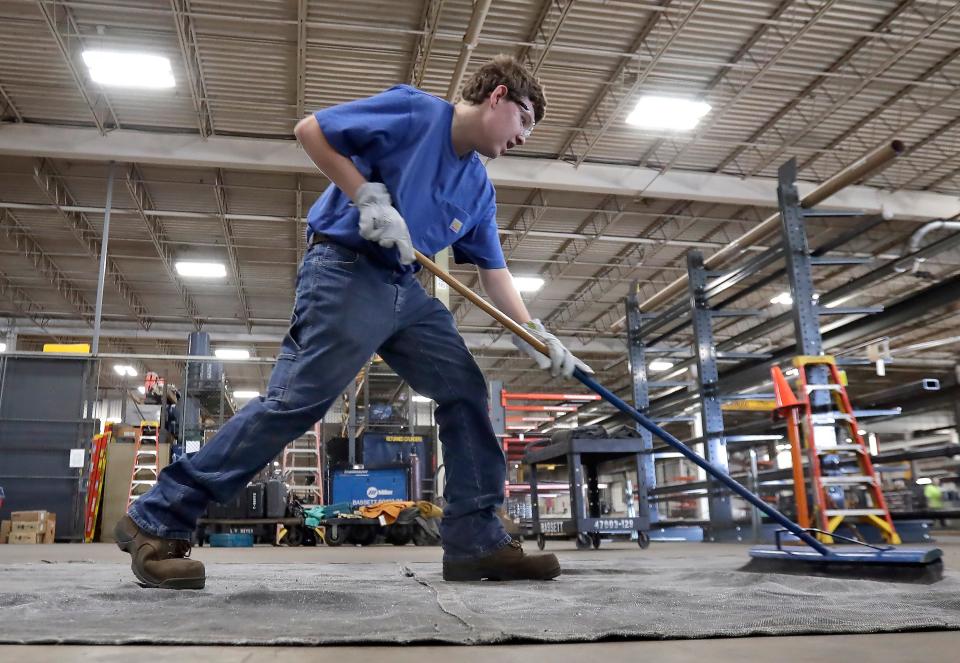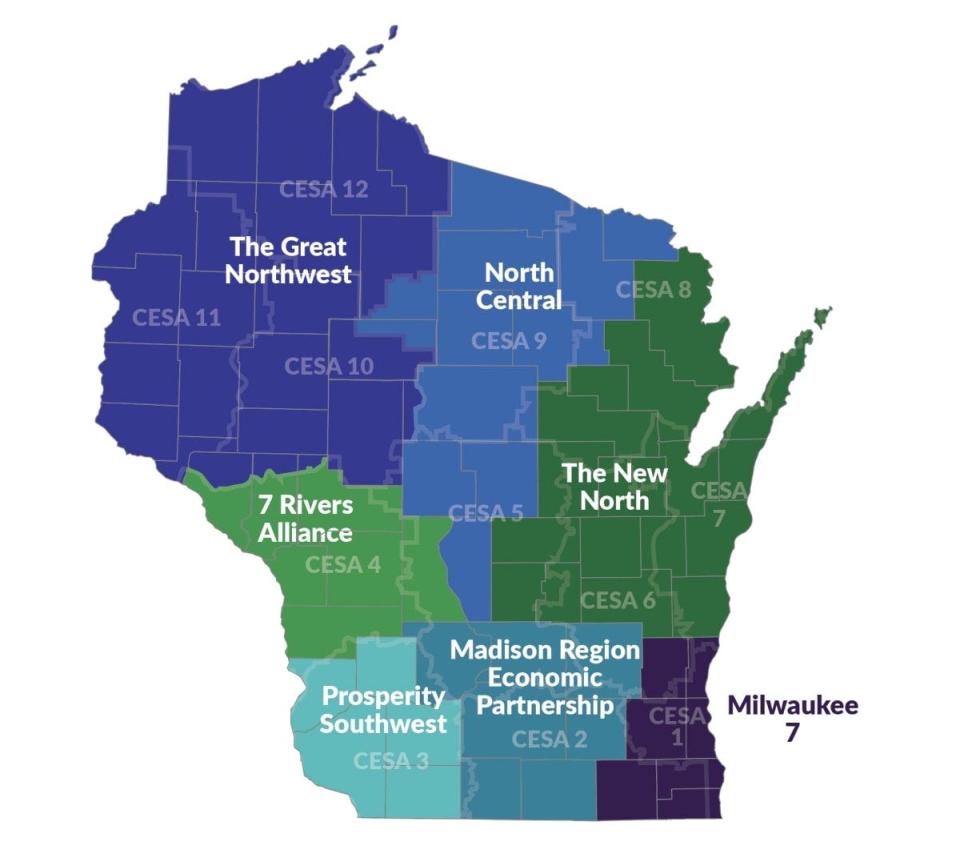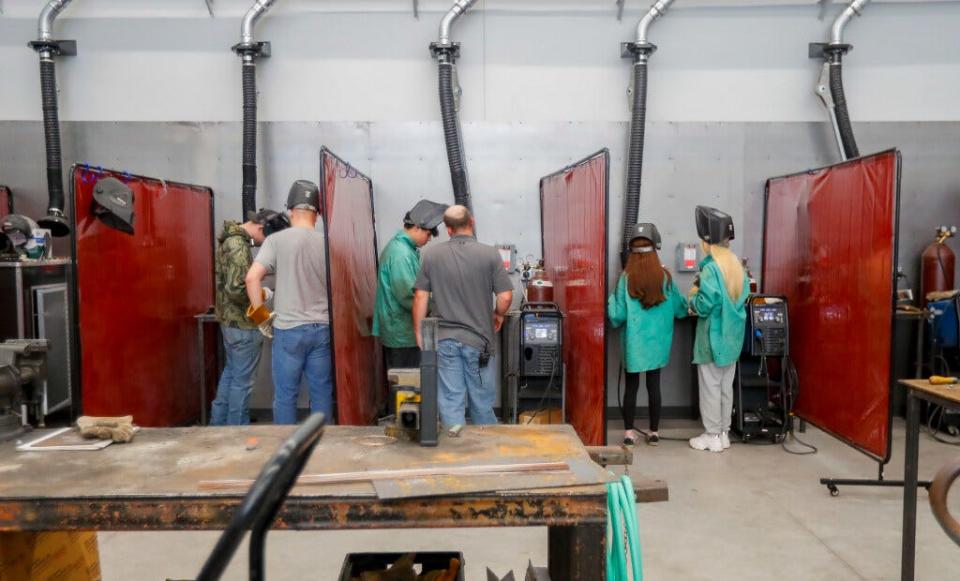Wisconsin politicians have specific goals for careers-focused education. What are they?
To fill high-demand jobs, Wisconsin state leadership wants to significantly increase the number of K-12 schools that incorporate careers-focused programs into students' education.
Specific plans for doing so are outlined in a 2022-26 strategic plan by the Governor's Council on Workforce Investment. Its goal is to find ways to fill jobs, recognizing that economists project Wisconsin will be without enough workers to fill holes left by baby boomers aging out of the workforce.
Expanding K-12 programs is one way to address those workforce shortages, according to the council's report. The push is for school districts to expand programs that give students on-the-job learning experience, or a head start on filling jobs with industry credentials or free college credit.
The goals are big — like doubling the use of some careers-focused K-12 programs — and include specific numeric targets. The strategic plan reiterates that the demographics of students in those programs should reflect the population of Wisconsin high schoolers.
Here's a list of those main goals and what they mean:
Double the number of students who complete a 'work-based learning' program, like an internship or youth apprenticeship
Among the goals in the statewide plan is to nearly double the number of high school students who participate in "work-based learning" before graduation.
That could include a youth apprenticeship, internship or other experience that involves "sustained interactions, either paid or unpaid, with industry or community professionals," according to federal standards.
Specifically, the 2022-26 strategic plan's goal is for 7% of Wisconsin high school students to have participated in work-based learning before graduation.
The state tracks data on the percentage of students in a particular school or district who participate in work-based learning. The statewide average was 2.8% in 2020-21, the most recently available data year on the school and district report card website.

More: These Wisconsin schools say tech education is about breaking stereotypes, preventing debt
2 in 5 high schools should provide access to a career pathway that leads to a high-demand local job
Another goal is for 40% of high schools to use a "regional career pathway" model, or pre-set courses and experiences — like high school classes, dual credit programs or apprenticeships — that make it easier for students to find a job in particular industry that needs workers locally.
There are several career sectors identified by the state as needing workers: agriculture, food and natural resources; architecture and construction; business administration; education and training; energy; health care; hospitality, culinary and tourism; information technology; and manufacturing.
Wisconsin is broken into seven regions defined by the Department of Public Instruction. Each region is aligned with particular career sectors based on local workforce needs. Schools within each geographic region are encouraged to implement related academic programs, or pathways.

For example, the Milwaukee region has six regional career pathways: advanced manufacturing, business administration finance, construction, digital technology, education and training and patient care.
School districts in the Milwaukee area choose which of those career pathways to create programs in, if any.
Milwaukee Public Schools has implemented regional career pathways in advanced manufacturing, construction and finance. The Waukesha School District has the same pathways, plus those in digital technology and patient care. Other districts in the Milwaukee region, like Pewaukee and Shorewood, haven't implemented any career pathways.
More: Wisconsin will pay full tuition for people with disabilities who choose high-demand careers
Double the number of high schoolers who earn 'industry-recognized credentials'
An "industry credential" refers to any certification that is recognized by an industry, like health care or business. For example, students could earn a certified nurse aide license or become certified in Intuit QuickBooks while still in high school.
The specific goal is for 9% of high school students to earn an "industry-recognized credential," or about double the current number.
School districts are incentivized to do so by a state grant program that pays up to $1,000 for every student who earns from a specific list of industry certifications. The program is already widely used in the state, paying out $25.9 million to school districts in the 2020-23 fiscal years.

Increase the percentage of high school students taking college-level classes to 30%
Dual-enrollment programs that lead to college credit for high school students are expanding in Wisconsin. The council's goal is for about one in three students, or 30% to have that opportunity.
A recent report from the Wisconsin Policy Forum found one in four students, or about 25%, took a dual credit class from a public university or technical college in 2021-22.
What is the Council on Workforce Investment?
Like other states, Wisconsin is required to operate a council on workforce investment under a 2014 federal law called the Workforce Innovation and Opportunity Act, or WOIA.
Strategies outlined in the state's strategic plan, including those focused on K-12 education, "were developed to face the current economic conditions of the state and address the significant challenges expressed by Wisconsin employers."
Those business-focused concerns come from representatives from various industries on the council itself, plus surveys conducted with the Department of Workforce Development and University of Wisconsin-Oshkosh.
"The results indicated that — regardless of past, present, or future — the most significant needs cited by employers were access not only to skilled workers but available workers in general. These responses reaffirm that the demand for workers pre-dates the pandemic and is a continued need to be addressed moving forward," the strategic plan reads.
Wisconsin's council includes several state government officials: Gov. Tony Evers; Amy Pechacek, secretary-designee of the Department of Workforce Development; and Emilie Amundson, secretary of the Department of Children and Families.
Morna Foy, president of the Wisconsin Technical College System, also sits on the council alongside several other representatives from K-12 schools, colleges and universities, and Wisconsin businesses and industries.
Cleo Krejci covers higher education, vocational training and retraining as a Report For America corps member based at the Milwaukee Journal Sentinel. Contact her at CKrejci@gannett.com. Follow her on Twitter @_CleoKrejci. Support her work with a tax-deductible donation at bit.ly/RFADonation.
This article originally appeared on Milwaukee Journal Sentinel: What Wisconsin's goals for growing careers-focused K-12 education?

